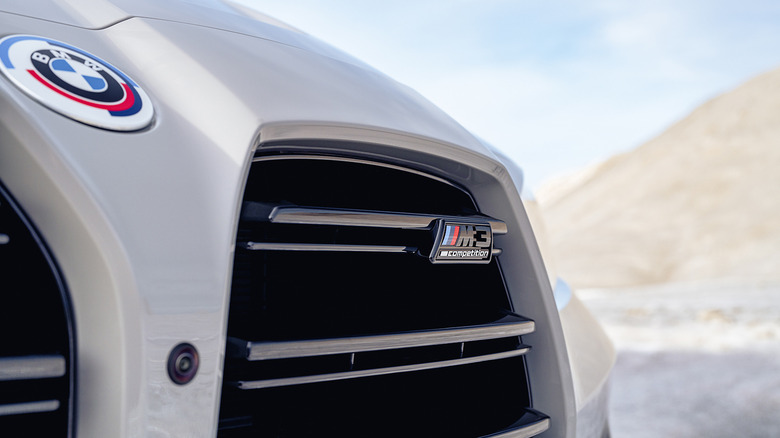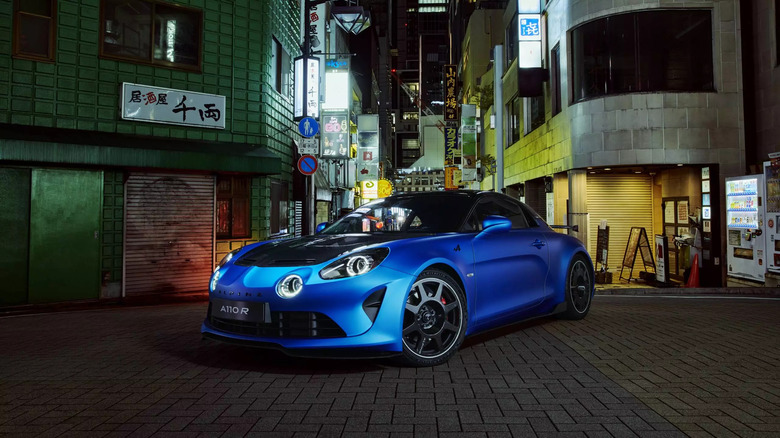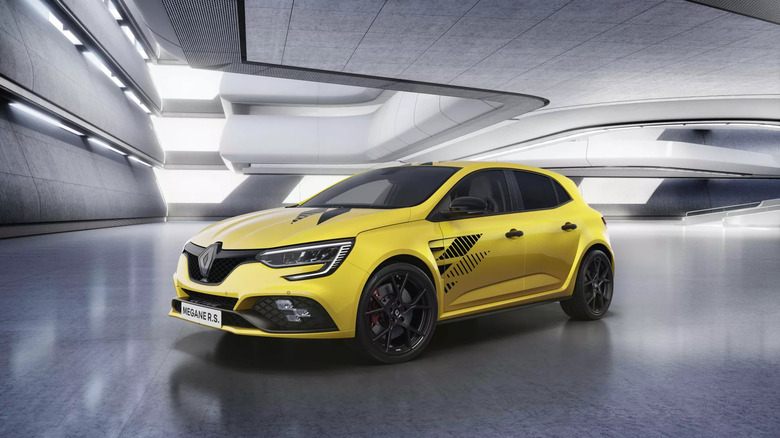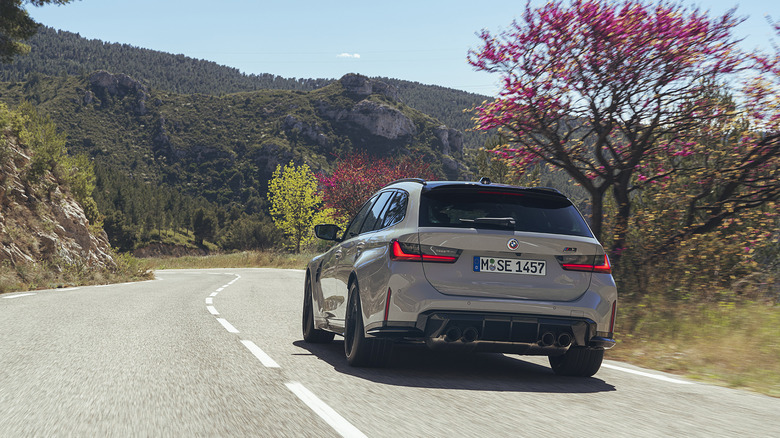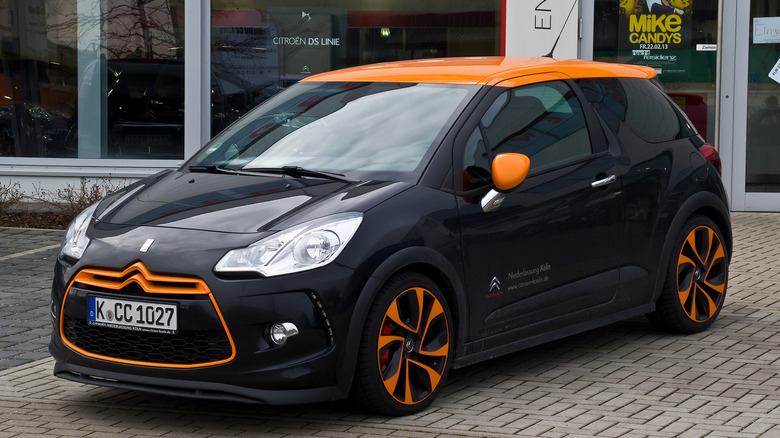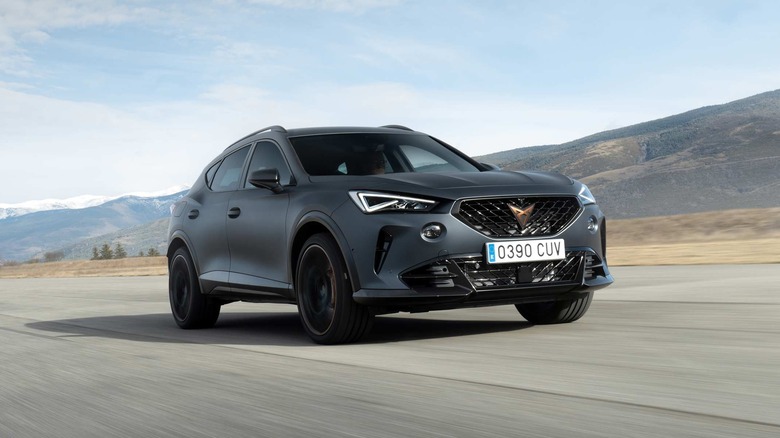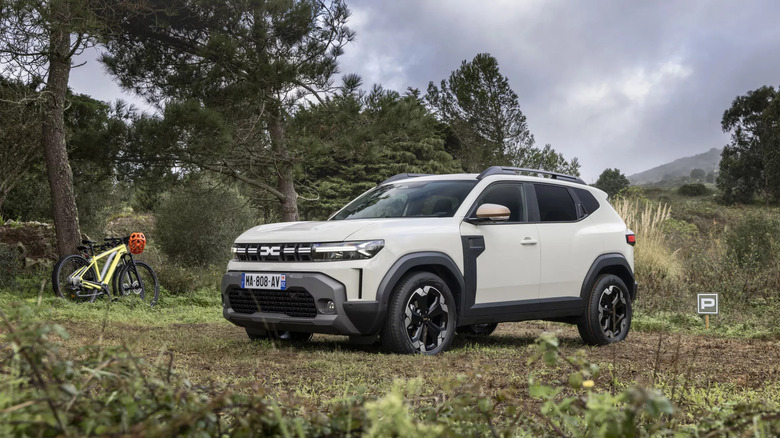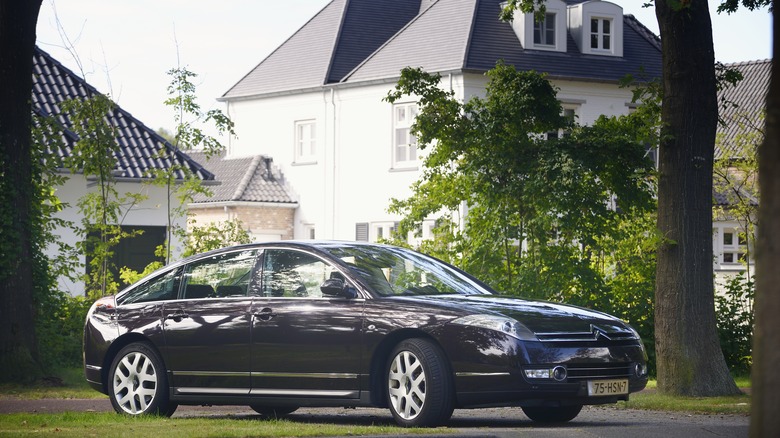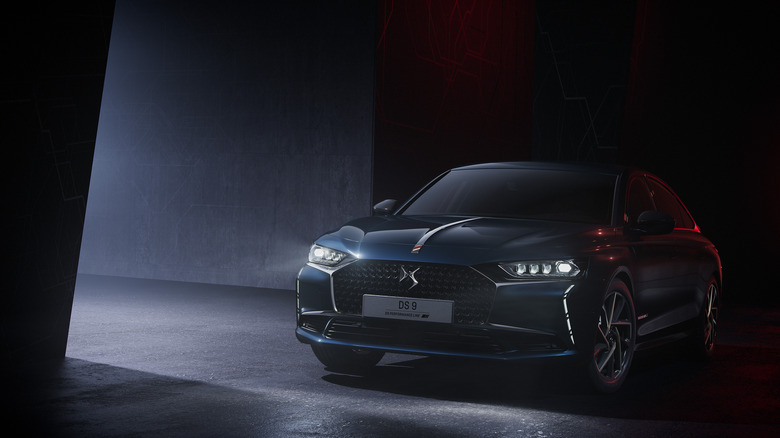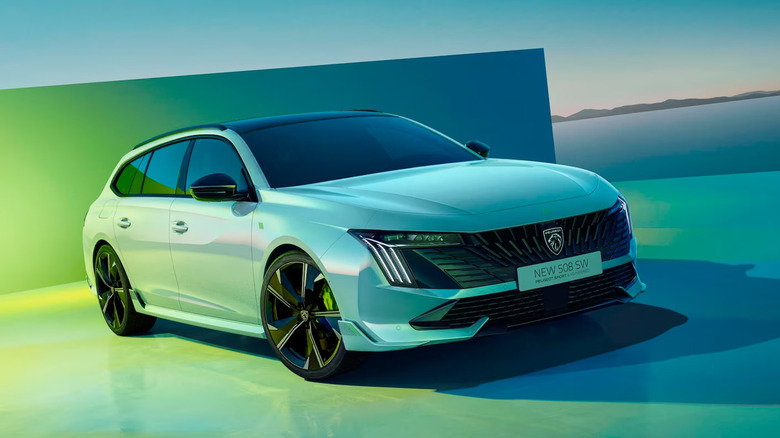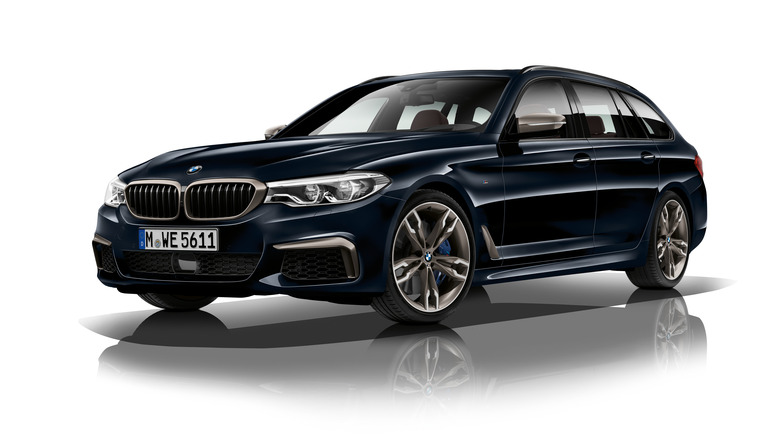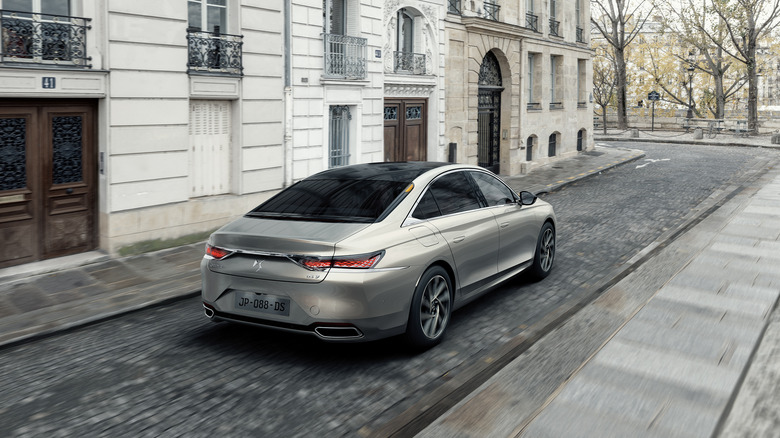10 Great European Cars That Never Reached US Shores
American buyers have an extensive choice of European cars. We get most of the good German models, from the BMW M3/M4 to the Volkswagen Golf R, and Land Rover sells all of its excellent SUVs in North America. But some great European cars are still missing. France is notorious for not bringing any vehicle into North America, even though today three French brands, Peugeot, Citroen, and DS, are under the Stellantis umbrella, the multinational corporation that also owns Dodge, Ram, and Chrysler.
France could never crack the code of the North American market, with the last French vehicle sold in the U.S. and Canada being the Peugeot 405 in 1991. In other words, American buyers missed more than three decades of innovation and some great cars, including excellent enthusiast models. And it's not just France. Spanish companies like Seat and Cupra also don't sell vehicles in North America, and they're great brands. Even German brands don't offer every cool vehicle in North America, keeping them available only to European buyers.
In this article, we will show you those forbidden fruits you still can't get in the U.S. These cars are less than 25 years old, meaning you can't even import them, no matter how tempted you are!
Alpine A110
You might know Alpine as the Formula 1 team previously known as Renault. It's the current high-performance brand of the French manufacturer, and although it underperforms in F1, it produces a road car that punches above its weight. The A110 is a featherlight mid-engine driving machine designed to attack any corner with agility and precision.
The A110 R version packs 300 hp from a measly 1.8-liter turbocharged four-cylinder engine. This sure won't ignite the soul of American V8 enthusiasts, but the A110 R doesn't need one because it weighs only 2,385 lbs. (1,082 kg). As a result, it reaches 62 mph (100 km/h) in 3.9 seconds while driving only the rear wheels. Top speed is 177 mph (285 km/h). Meanwhile, the slightly heavier A110 S needs 4.2 seconds to reach 62 mph, while the entry-level, 252-hp A110 does it in 4.5 seconds.
But the numbers don't tell the whole story. This is a car designed for small, twisty roads, with a big focus on balanced handling and ultimate response. It's a breath of fresh air in a segment filled with overpowered and heavy sports cars. Yes, it will lack the rumble of a V8 sports car, but turn the steering wheel and it will feel much livelier — like a race car for the road!
The only thing the Alpine A110 lacks to reach pure driving nirvana is a manual transmission. Instead, Alpine went with a 7-speed dual-clutch automatic. Not that we'll protest if it comes like this to the U.S., though we'd love to get a limited edition model like in Japan.
Renault Megane R.S.
If you live in the U.S. and want the most aggressive front-wheel-drive hot-hatch, you can only really go with the Honda Civic Type R (which we liked in our review). However, until recently, European drivers could opt for the Renault Megane R.S. (for Renault Sport) — a true race-bred FWD hot-hatch. Unfortunately, Renault killed the Megane R.S. because of its electrification efforts, but this avant-garde hot-hatch remains a dream car for many enthusiasts living on the continent.
The last Megane R.S. to hit showrooms is the Ultime. Looking at the upgrades, it becomes clear that Renault Sport engineers went all in with this model. It has a 60-mm front and 45-mm wider rear fenders, side air vents, a rear diffuser, and even a Formula 1 blade on the front bumper. Under the sculpted front bonnet sits the same 1.8-liter turbocharged four-cylinder from the Alpine A110 R, producing 300 hp. The power is channeled to the front wheels via a dual-clutch automatic and a Torsen limited-slip differential, though some markets get a 6-speed manual. Due to traction restrictions, the Megane R.S. hits 62 mph (100 km/h) in 5.7 seconds.
However, the Megane R.S. has never been about off-the-line acceleration. It's a hot hatch designed to offer the full experience, with sharp cornering and stability under braking. Each generation attacked the Nurburgring Nordschleife and set a new FWD hot-hatch record (for the time), showing its racing pedigree. Sadly, even the first-gen model, produced from 2004 to 2006, can't be imported to the U.S. for another five years. Once possible, though, you might want to give the Megane R.S. a closer look.
BMW M3 Touring
A high-performance wagon M3 has been a car enthusiast's dream for quite a long time. After years of waiting, in 2022, BMW finally introduced the BMW M3 Touring – a practical wagon with performance that matches modern supercars. Like every new BMW, the M3 Touring also has a luxurious cabin with hi-tech features. However, not all BMW aficionados will be able to enjoy this vehicle, as the M3 Touring won't be available in North America. Hardly surprising, given that wagons have fallen out of favor here; still, the practicality-performance-luxury cocktail seems irresistible even for Americans.
All the specs of the BMW M3 Touring point to it being a great parent and enthusiast vehicle. The trunk, for example, measures 17.7 cubic feet (500 liters) in capacity up to the tonneau cover, despite the xDrive AWD system taking space in the back. Owners will also enjoy a low boot floor and a large opening, so putting large and heavy items in the back is much easier. Space for occupants is also plentiful in both the front and rear seats.
Performance is a non-issue as well. The M3 Touring borrows the 3.0-liter turbocharged inline-6 from the regular M3, producing 510 hp and 479 lb-ft of torque. Aided by the M xDrive system with Active M differential and the quick-shifting eight-speed automatic, the engine propels this crazy wagon to 62 mph (100 km/h) in just 3.6 seconds. We found that the regular M3 Competition xDrive performed like a bonafide supercar killer, so we expect much of the same in the M3 Touring.
Citroen DS3 Racing
The Citroen DS3 Racing is the definition of a pocket rocket. Measuring only 13 feet in length and weighing just 2,568 lbs (1,165 kg), it's smaller and lighter than most new vehicles sold in North America today. Still, it packs a potent 1.6-liter turbocharged four-cylinder, producing 207 hp and 202 lb-ft of torque. As a result, this front-wheel-drive hot hatch sprints to 60 mph in just 6.1 seconds and tops out at 146 mph.
Reviewers praised the driving experience as well. The DS3 Racing handles like the hot hatches of yore, with a playful chassis that allows sharp turn-in just by lifting the throttle. Add to that a slick-shifting six-speed manual, precise hydraulic steering, and a twisty French country road, and the smile on your face is almost guaranteed.
The DS3 Racing also looks the part. On the outside, it looks almost like a piece of jewelry, with a nicely sculpted body, sporty details, a recognizable orange/gray two-tone paint, and a checkered decal on the roof. The interior is similar, as it follows the two-tone scheme with a bright-colored orange dashboard. It might look tacky to some, but it does suit the character of the vehicle. Don't expect adults to fit in the cramped back seat, though.
Citroen produced the DS3 Racing for only one year, from 2011 to 2012. Initially, the company planned to make 1,000 cars, but huge demand saw that number rise to 2,400. So, even when eligible for import, the DS3 Racing will be a rare sight on U.S. streets.
[ Featured Image by M 93 via Wikimedia Commons | Cropped and scaled | CC BY-SA 4.0 ]
Cupra Formentor VZ5
Sharp looks. Practical and spacious cabin. Four-wheel drive. Five cylinders, one turbocharger, and 390 hp. This Spanish crossover with German roots is no joke — it will rip the road underneath and put a smile on your face, all while your kids are screaming for joy in the back. It's the crossover every American would dream of — the Cupra Formentor.
For those who don't know much about the European car scene, Cupra is a performance sub-brand of Seat, the Spanish automaker that operates within the Volkswagen Group. The Formentor is easily Cupra's most attractive model at the moment, but it's the VZ5 version that we would like to arrive on U.S. shores. It packs the sonorous 2.5-liter turbocharged five-cylinder engine from the Audi RS3, which brings it to 62 mph (100 km/h) in just 4.2 seconds.
The Formentor also features a specially-developed seven-speed dual-clutch gearbox. No manual is offered, sadly. Still, the gearbox sends the power to a special four-wheel drive system with a Torque Splitter, which Cupra says provides torque vectoring at the rear axle for sharper turn-in and higher grip. Meanwhile, 375-mm Akebono brakes ensure you'll stop on time. Thus, overall, it should drive similarly to an Audi RS3, for better or worse.
Cupra will only make 7,000 examples of the Formentor VZ5, so even European buyers will have a hard time finding one. Fortunately, there is the toned-down Formentor VZ310, which shares the 2.0-liter turbocharged four-cylinder with the Golf R, producing 310 hp. This model needs 4.9 seconds to reach 62 mph, which is still very respectable.
Dacia Duster
The Dacia Duster is by far the cheapest compact crossover/SUV in Europe. In Germany, it starts at €19,690 ($21,300) and is equipped with a 100-hp engine that can run on gasoline or natural gas. A mild-hybrid 130-hp version starts at €23,400 ($25,314), while a 4x4 model with the same powertrain will cost you €25,700 ($27,807). Those prices don't seem cheap to an American buyer but keep in mind that Europe has much bigger taxes on cars. If sold here, the Duster would comfortably undercut even the most AWD affordable trucks.
The price isn't the only attraction, though. For instance, the Duster has better off-road capabilities than any other crossover at that price, making it the darling among budget-minded overlanding enthusiasts in Europe. Notably, the latest 2024 iteration comes with an optional 4x4 Terrain Control drivetrain with a close-ratio transmission. The system has five driving modes: Auto, Snow, Mud/Sand, Off-Road, and ECO. Moreover, the ground clearance sits at 8.54 inches (217 mm), which is easily the highest for any compact crossover vehicle. The 31-degree approach, 36-degree departure angles, and downhill speed control are useful, too.
Dacia engineers also made sure the Duster was well-protected when facing rough terrain. The crossover/SUV has front and rear skid plates and shields around the car made of Starkle® – an unpainted material that doesn't show scratches. Overlanding accessories are available, too, like a "Sleep Pack" double bed and a new roof rack. In the U.S., you are only getting these things in an expensive off-road SUV — not in a cheap and chic compact crossover!
Citroen C6
German premium automakers always try to inject some sportiness into their high-end luxury sedans, but the French do it differently. Perhaps the best current example of that is the Citroen C6. This extravagant luxury car is the opposite of sporty, aiming to transport passengers in the most relaxed way possible.
The technology that makes that possible is the self-leveling hydropneumatic suspension, the same one used in Citroen's most popular car, the DS. It provides a buttery-smooth ride on any surface, making you feel like you hitched a ride on a cloud. The C6 is the last large luxurious Citroen with that suspension. Drive it today, and it will feel like a time capsule, bringing you back much further than the period when it was on sale (2006-2012).
However, there is more to the C6 than the suspension. It's elegant body lines, fastback rear, and unique concave rear window will still turn heads. The interior is simple yet plush, with ample space in both seating rows. The engines were underpowered, even for the era, though the 2.7-liter V6 turbodiesel was at least economical.
The C6 is then an interesting proposition until it occurs to you that it is a Citroen. Reliability is a concern with these vehicles, so if you want to enjoy one, be prepared to have some cash aside to keep it running. That doesn't make it any less cool, though!
DS9
The DS9 is the spiritual successor to the C6, as the DS brand itself was born as a premium Citroen with the DS3. Although more sedate on the outside than the C6, the DS9 is unmistakably French, with a stylized front and rear end and sculpted body panels. Inside, it exudes extravagance, with a stylish dashboard, good materials, and excellent attention to detail.
But the pièce de resistance of the DS9 again is the suspension. Gone is the complex hydropneumatic system from the C6, replaced by DS Active Scan Suspension. This new system scans the road ahead using cameras, so it can change the damping on the fly when it detects potholes or other road irregularities. Sounds a bit intricate, but reviewers say it works tremendously — the DS9 is again one of the most comfortable sedans on sale in Europe.
The DS9 incorporates other advanced features. Notably, 2024 models come with ChatGPT as standard in five European countries. The driver or passengers can talk to the generative AI using DS's speech recognition and use it as a travel companion. Furthermore, buyers can opt for DS PARK PILOT, an automated parking system, and DS NIGHT VISION, which would allow the driver to spot objects further in the dark.
Electrification is the name of the game with the DS9, with the most powerful E-TENSE 4x4 360 plug-in hybrid model with 355 hp pushing this big sedan to 62 mph (100 km/h) in just 5.6 seconds.
Peugeot 508 SW PSE
Imagine taking the powerful PHEV setup from the DS9 and putting it in a smaller, super-attractive wagon body. Peugeot has done just that with the 508 SW PSE. This might just be the most alluring wagon currently on sale. It has a very aggressive front end and bold rear end, connected by a chiseled side profile, all working in harmony.
Inside, the 508 SW PSE is equally attractive, with a futuristic dashboard design that is the total opposite of what the Germans offer. It also has lots of space in both seating rows and a useful 17.2 cubic foot (487-liter) trunk capacity (up to the tonneau cover).
For the powertrain, Peugeot went with a plug-in hybrid setup. It's not something you'd want to hear in a high-performance wagon, but still, with 355 hp on tap, it's the most powerful Peugeot to date. Crucially, it can bring the 508 SW PSE to 62 mph (100 km/h) in just 5.2 seconds and on to a limited 155 mph (250 km/h) top speed.
Power goes to all four wheels, though the rear axle only gets it from an electric motor. Regardless, the 508 SW PSE offers stable and predictable cornering, adhering to the needs of family buyers. That said, reviewers say it isn't the most engaging car to drive and far from the heights the Germans reached. Still, with performance wagons being few and far between, the charming 508 SW PSE remains an attractive proposition.
BMW M550d xDrive Touring
What is a diesel doing on this list? Well, this is not your ordinary diesel — it's a 3.0-liter inline-6 unit with four turbochargers! As a result, it produces 400 hp, a mind-blowing figure for such a small unit. And the torque it produces is even more impressive — 561 lb-ft! That would beat most full-size trucks, let alone regular cars. Oh, and all that torque is available at just 2,000 rpm, with 330 lb-ft of it being available to your right leg at 1,000 rpm!
As you can imagine, this over-engineered powertrain moves the large m550d xDrive Touring effortlessly. For instance, at 60 mph and in eighth gear, the odometer needle stays at 1,200 rpm. The performance numbers are also mighty impressive — the M550d takes only 4.4 seconds to reach 62 mph (100 km/h). Of course, thanks to all that torque, this functional wagon will happily accelerate anytime and in any gear. A true road-going locomotive.
Sure, the M550d xDrive Touring won't be as sporty as a V8-powered 5 Series, despite the standard rear-wheel steering. However, it doesn't need to be. There is something special about a vehicle that achieves high velocity effortlessly and without too much drama. It's perhaps the best highway machine currently in existence. It's also hugely practical and looks pretty rad.
Still, with four turbochargers, the engine will be a nightmare to repair, and reliability is a concern. So, don't expect to see one on U.S. roads, even when this wagon can be finally imported here in 2043!
How did we choose these cars?
Many European models are not available in the U.S., but not all of them are interesting. Most are small urban dwellers, which American buyers have never wanted in the first place. Instead, we focused on bringing you vehicles that could reinvigorate the North American market with style, performance, and features. Each of these models is special in its own way. Hope it helped you find a European car to dream of!
